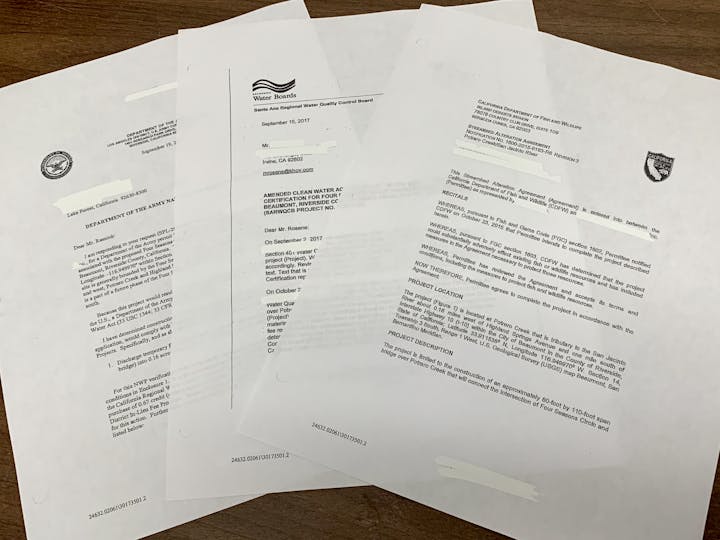Mitigation for Loss of Habitat

When is Mitigation Required?
When a proposed development project may adversely impact habitat, regulatory agencies may require a developer to mitigate those impacts as a condition for granting necessary permits. Commercial or residential developers may be required to obtain environmental permits from regulatory agencies, including the United States Army Corps of Engineers (“Army Corps”), the California Department of Fish and Game, the Santa Ana Regional Water Quality Control Board, Environmental Protection Agency, United States Fish and Wildlife Service, Western Riverside County Multiple Species Habitat Conservation Plan and others.
The Riverside-Corona Resource Conservation District (RCRCD) is a non-regulatory, not for profit, public agency that is able to assist private landowners with habitat creation, restoration, conservation, and related activities in riparian, upland, and woodland habitats, per Divison 9 of the California Public Resources Code Article 1 Policy 9001 Section B Article 3 & 4. The RCRCD has specialized in performing certain mitigation-related activities for those seeking or holding regulatory permits. The District removes exotic aquatic and plant species, propagates and plants native habitat species, and more.
There are different ways to mitigate impacts, and the mitigation is imposed by the regulatory agencies, not by The District. We provide services, “conservation activities”, that are commonly required as part (or sometimes even all) of the mitigation terms of a permit. Sometimes the required mitigation involves things we cannot do. The responsibility for either performing, or arranging for the activities required for mitigation is entirely the responsibility of the developer. The RCRCD does not provide assistance in applying for, obtaining, or complying with the environmental permits. As a permit condition, a permitting agency has set forth certain mitigation requirements, and the permit itself sometimes states that the District is qualified to provide certain services.
Typically, the mitigation requirements specify both the type of activity and some standard for that activity. Those standards are usually specified in a planting plan: a Habitat Mitigation and Monitoring Plan (HMMP). If a developer does not have an acceptable plan, RCRCD can prepare one for a fee. A HMMP takes about 30 to 60 days to prepare. To complete a plan, we need the project map, project description, and a copy of permits that require the mitigation in order to determine what activities we might provide; including easements, dedications, property grants, etc. The RCRCD can usually provide an estimate within 30 days. The estimate remains valid for 30 days.
RCRCD requires a deposit before expending significant resources on conservation agreement negotiations. The deposit is to cover the administrative, staff, material, and legal costs incurred in preparing the conservation agreement. Unused portions of a deposit are returned upon entering into a conservation agreement or cancellation by either party.
Suitable specific habitat lands are sometimes not in supply. As a result, some project proponents prefer to reserve conservation habitat at the beginning of the negotiation process. RCRCD may accommodate such requests through an “In Lieu Fee” arrangement.
RCRCD may require certain language to be included in project grant deeds, CC and R’s (codes, covenants and regulations), and/or disclosures.
To begin the process, a developer must complete a Deposit Agreement, Permission to Enter Property, and an Indemnification Form.

